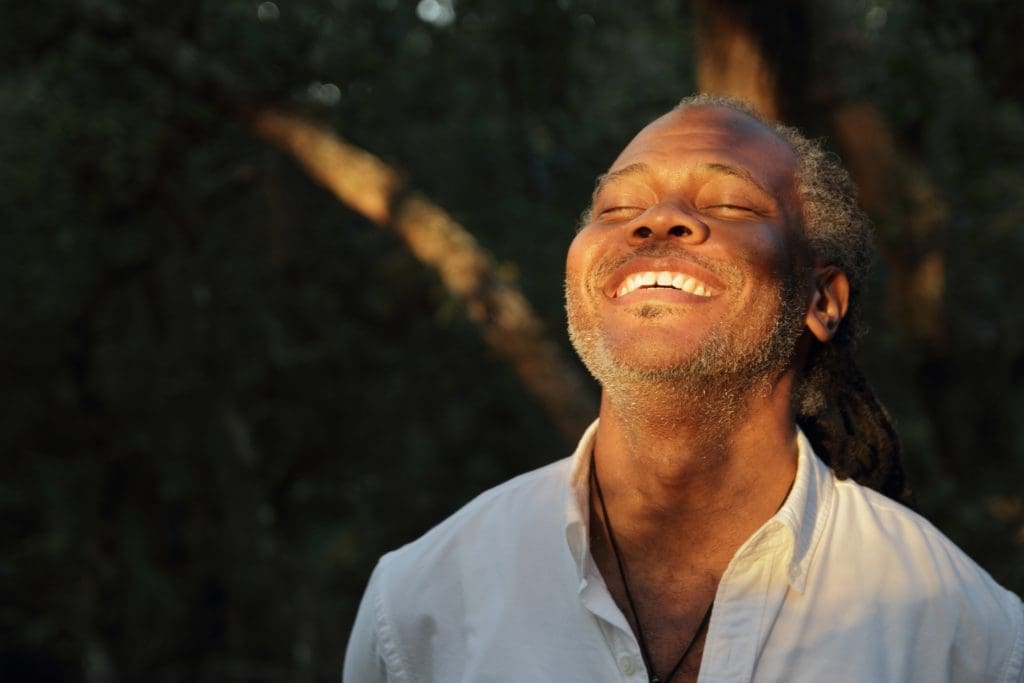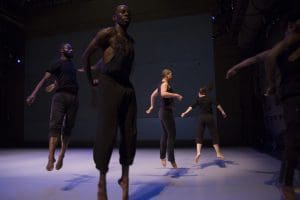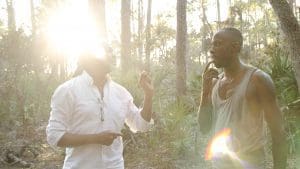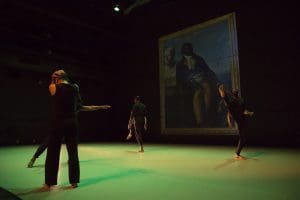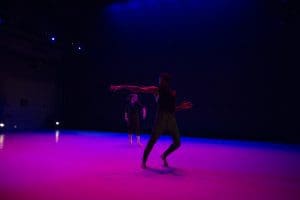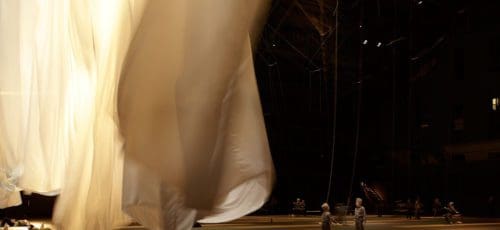A CITIZEN Reading List, provided by Reggie Wilson
Reggie Wilson creates choreography drawing from the spiritual and mundane traditions of Africa and its Diaspora. His company, Fist and Heel Performance Group—described on it’s website as “Not your mama’s post-modern dance company”—derives its name from practices of enslaved Africans in the Americas who reinvented their spiritual traditions into a deep, soulful art form dismissed by overseers as “fist and heel worshipping.” He has lectured, taught, conducted workshops, community projects, and has had his work presented nationally and internationally. He returns to the Fringe Festival this September, premiering his latest work, CITIZEN, as part of our opening night celebration. He has graciously provided FringeArts with a list of readings that speak to to his latest work.
A group of suggested readings that provided insight, inspiration and information for the development of CITIZEN as well as readings that might be helpful to viewers of the performance work.
Wrapped in Rainbows: The Life of Zora Neale Hurston by Valerie Boyd
Simply put, the most enjoyable, readable, informative autobiography of a woman I admire and continue to be inspired by, time and time again.
Choreographing the Folk: The Dance Stagings of Zora Neale Hurston by Anthea Kraut
A study on the why and the how of Zora’s choreographing.
REFLECTION:
Opened my eyes to the impact and work of Zora Neale Hurston on the moving body in African Diasporic culture. Explicitly discussing the construct of “the folk” in Zora’s work and multiple issues around ideas of authenticity. [Book provided by Susan Manning, Phd., at the time she was Dramaturge for my production Moses(es)]
Called and Chosen: The Story of Mother Rebecca Jackson and the Philadelphia Shakers by Richard E. Williams
A discussion, reflection and sharing of information on an itinerant preacher, Mother Rebecca Jackson (a woman who prayed herself literate) and her black prayer bands, her independent development of a theology that paralleled Shaker theology and her seemingly coincidental meeting and merging with Shaker Society.
REFLECTION:
Provides wonderfully long tracks of her own writing from her diary; reflects how she perceived reality and the world; reveals her views and what she focused the most importance on. The book tracks her life, thoughts and beliefs. [Book provided by Lisa Nelson-Haynes during research period for Re-Place-ing Philadelphia a Pew funded project of the Painted Bride]
Early Jazz: Its Roots and Musical Development by Gunther Schuller
A Basic History of early Jazz.
REFLECTION:
Helped me to think about how Jazz began; its African origins and continued relationship to music from the continent. I read this during my early research at the beginning of the thinking for CITIZEN. [Book provided by Mikki Shepard, who was at the time, Executive Director of the Apollo Theater]
Paris Noir: African Americans in the City of Light by Tyler Stovall
“Alongside Ernest Hemingway, Gertrude Stein and Henry Miller was an avant-garde and tightly knit community of African Americans who found in Paris the artistic, racial and emotional freedom denied them back home. The writers James Baldwin and Richard Wright; the jazz musicians Miles Davis, Charlie Parker, Sidney Bechet; and the artists Henry Ossawa Tanner, Loïs Mailou Jones, and Jean-Michel Basquiat are among the score of exiles for whom Paris symbolized a color-blind society. Unlike their white compatriots, African Americans in Paris rejected not only American society, but also their victimized status in the U.S.” (Book blurb)
REFLECTION:
Paris Noir talks about how the Jazz Age came to Paris, how black folks lived and survived in Paris, what they did and how they were thinking about who they were; what was the value of black lives, and black culture? It gave me some basic history and practical information on why folks moved there, why they might have returned to the US and what innovations came about in culture and intellectual thinking at the time. [Book provided by Susan Manning as a birthday gift]
Together Let Us Sweetly Live: The Singing and Praying Bands by Jonathan C. David
A Sharing of the stories of the continued practice of the Singing and Praying Bands of tidewater communities of Maryland and Delaware.
REFLECTION:
The Singing and Praying Bands were a continuation of the ring shout and its retentions and transformations of several basic components and values of African religious cultures. It is a detailed laying out of how “help” operates as a “system of social reciprocity and mutual aid.” Provided me with detailed images, discussion, explanations and examples of how the “shout” continues and functions. In my thinking, I connected this practice with the possible practice of Mother Rebecca Cox Jackson of the 1800s who prayed herself literate. [Book provided by Germaine Ingram, during early research phase of the project Re-Place-ing Philadelphia by The Painted Bride]
Flash of the Spirit: African & Afro-American Art & Philosophy by Robert Farris Thompson
A constant go to for information and inspiration.
REFLECTION:
This is a deep analysis of 5 key African civilizations and their continuation in the New World. Connects the old world with new; Linking specific cultural “carry overs” and their developments.
Banjo by Claude McKay
An highly impactful novel by Claude McKay.
REFLECTION:
Helped me think in concrete terms about the relationship of African-Americans and their culture in relationship to France (and Europe) and the African populations residing there. [Book provided by Ernest Mitchell, Harvard doctoral candidate]
The Practice of Diaspora: Literature, Translation, and the Rise of Black Internationalism by Brent Hayes Edwards
A dense scholarly thinking and discussion on the migration of people, ideas, culture and the building of alliances between New York and Paris in the 1920s and 30s, especially in the black print/publishing world.
REFLECTION:
Cracked open my thinking about how these two cultural centers affected and influenced each other and the global production of Black cultures (high and low)
The Journey of John W. Mosley: An African-American Pictorial Album by Charles L. Blockson
A compelling collection of images of black folks and their lives in Philadelphia in the mid-20th century.
REFLECTION:
Provided an insider’s perspective and information on what concerned them; how they organized their communities and what concerned them. There are numerous quality images of the high and the low of Black social and cultural life with a whole lot of the middle. [Book provided by the Charles L.Blockson Afro-American Collection at Temple University- during research for Re-Place-ing Philadelphia, a project of The Painted Bride]
On the Making Of Moses(es): Notes from a Dramaturge’s Journal by Susan Manning
from TDR/The Drama Review, the journal of performance studies. Spring 2015
Describes how I find connections between seemingly disparate materials; ends with a nod towards my new performance work CITIZEN.
Dancefilm: Choreography and the Moving Image by Erin Brannigan
Brings film theory and dance theory into deep conversation with reflection on historic high points of the avant garde, musicals and music videos as well as the silent film era.
REFLECTIONS:
Provided the CITIZEN production team with scholarship and insights highlighting the experiments and influences of iconoclasts and innovators of light, image and technology Loie Fuller, Mia Daren and Yvonne Rainer. [Recommended by Tim Glenn, professor of dance technology at Florida State University, Tallahassee]
—Reggie Wilson

